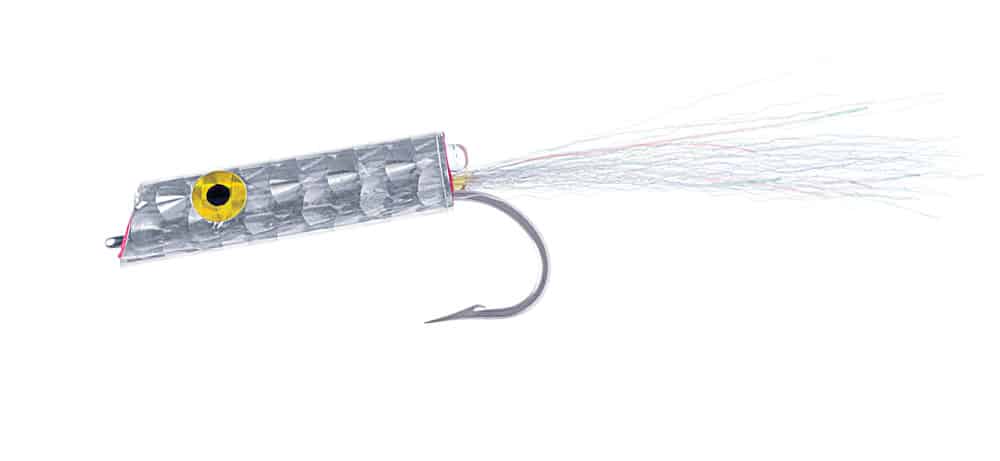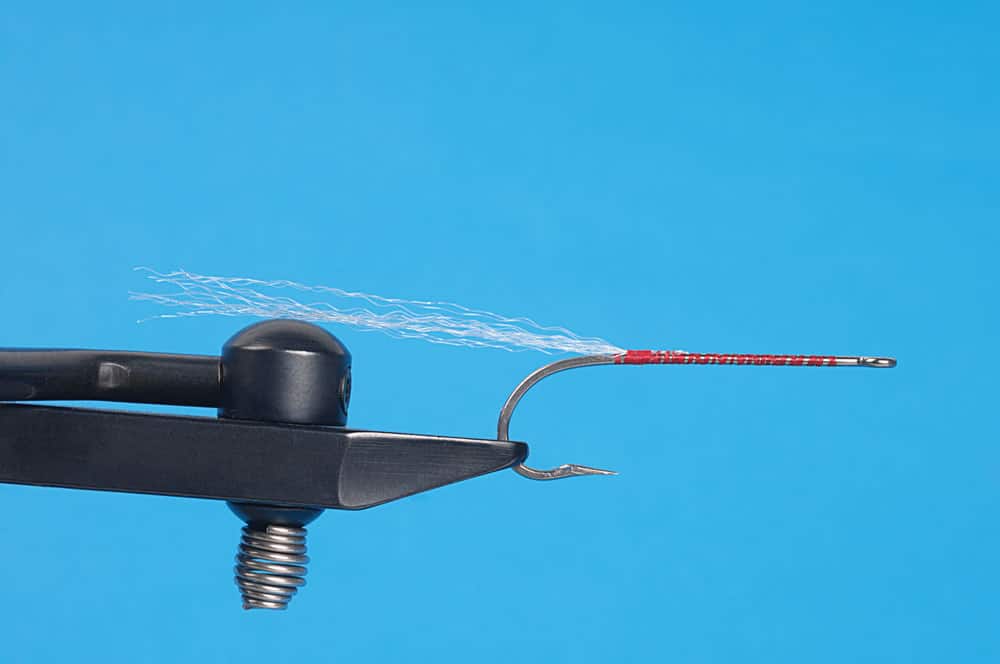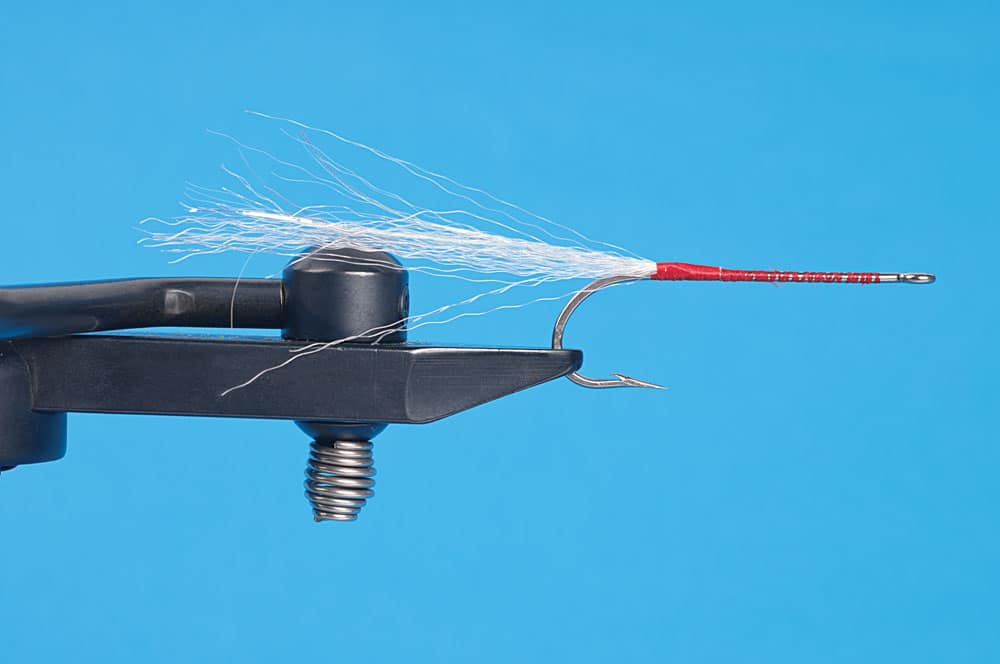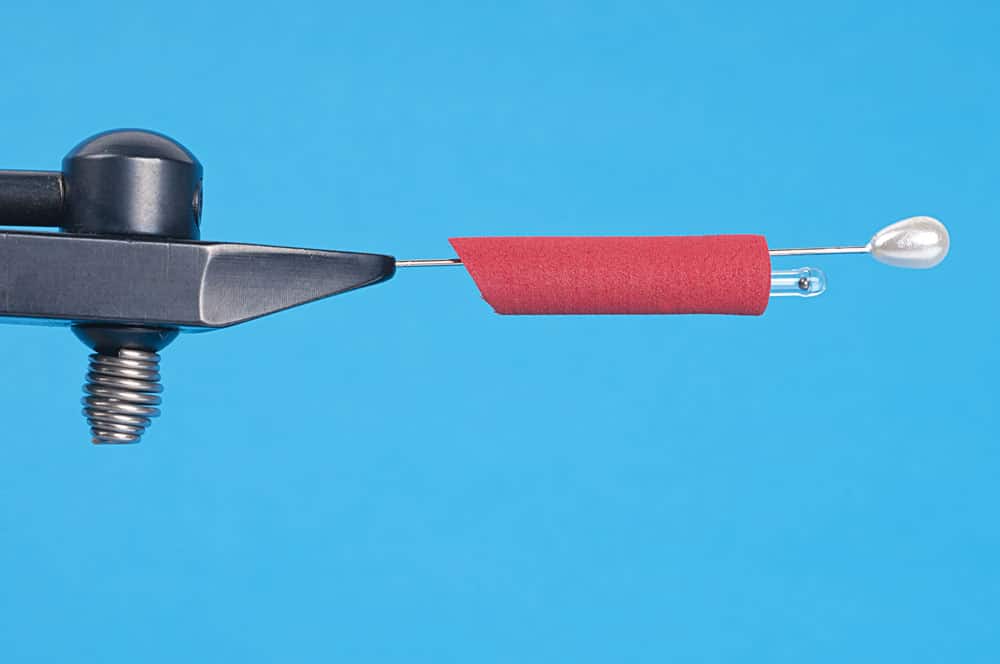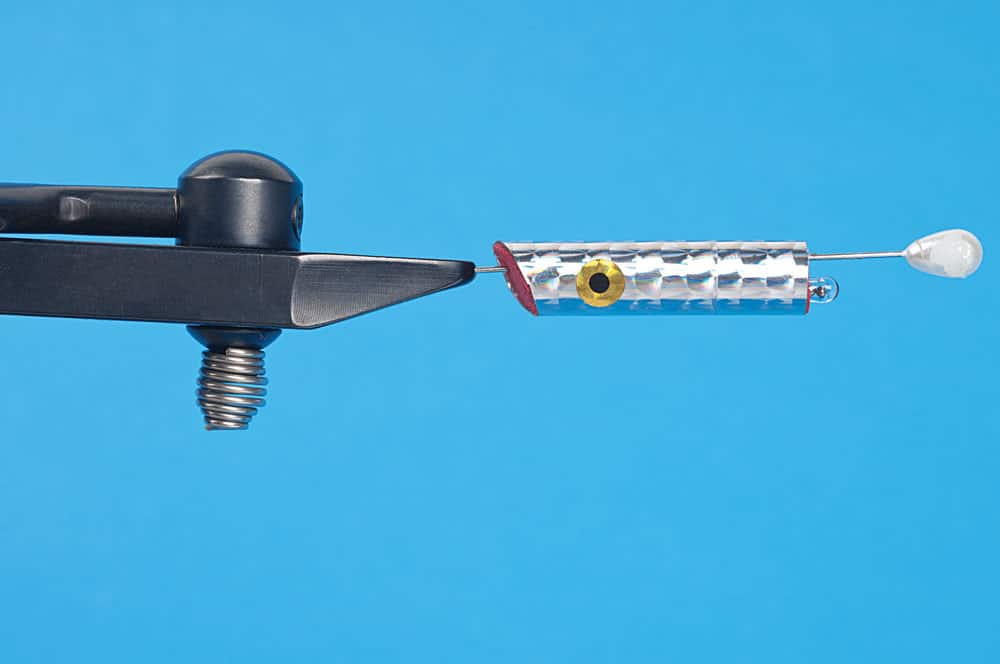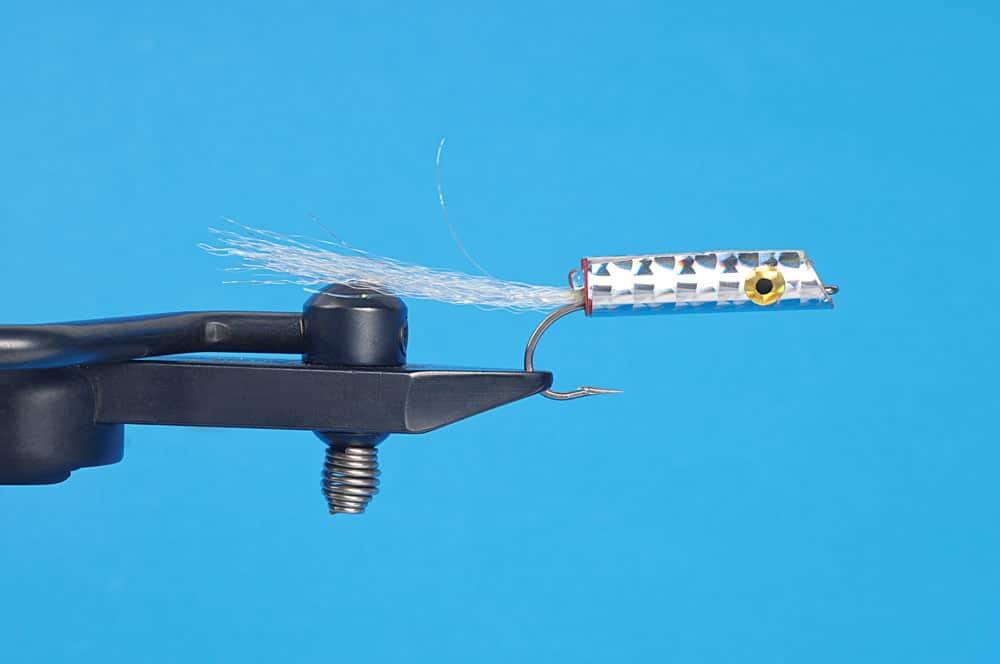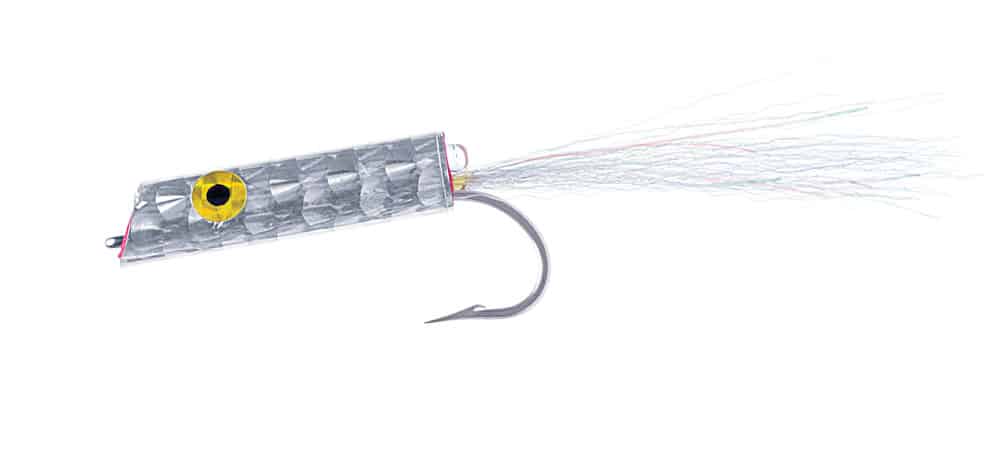
Shallow Water Striper Fly
When striped bass begin chasing massive schools of sand eels along the backwaters of the Atlantic Coast, some of the hottest shallow-water angling is at hand. The bountiful eels prefer soft bottoms where they can eventually slink into the sand as a defense mechanism, though they spend a good portion of time fairly high in the water column. During this period, they can be seen meandering in dense schools, sometimes in water no deeper than a beer bottle. Frequently called sand lances too, these baitfish are officially named American sand lances, and when they frequent skinny water at dawn and dusk, striped bass begin the chase. This rockfish activity normally occurs when the light begins to change. While worm hatches get most of the press for vivid displays, it’s common to see impressive numbers of bass making holes on the surface when the lances show up. There are many sand-eel streamer patterns, most notably those tied with bucktail. These are effective and fun to cast due to their slim profile, but the visual aspect of this fishery is absent when you employ subsurface flies. Presenting a well-thought-out surface offering to stripers as they swirl provides an exciting visual dimension.
Designing the Slammer
The best surface designs for these conditions are slim, pencil-shaped divers that resemble sand eels and make a commotion on top much like small raindrops. I use some of the materials
that Bob Popovics made famous with his Bob’s Banger popper to create a diver I call the Striper Slammer. But the Slammer’s profile, method of assembly and action are surely different. Bob’s Banger is a bulky, rowdy topwater fly designed for bluefish blitzes in particular. The round closed-cell foam of that pattern is usually a half-inch to three-quarters-inch in diameter. The front is kept at a 90-degree angle, and a hole is bored in the center of the foam body. The Striper Slammer uses a slender foam cylinder with a slanted 45-degree angle to effect the pose and action of a diver. Also, the hole is made through one-third of the foam cylinder center. When the foam body is slid onto and glued to the hook shank, the weight of the hook keeps the Slammer in a diver position on the water.
Round closed-cell foam rests in the surface film of the water, not on top of it — a terrific characteristic that aids in solid hook-sets. The bug tracks accurately and does not pop out of the water during retrieves or when a bass strikes. The round foam is so pliable and resilient, I added a rattle inside of the body. Rattles attract fish, and the unobtrusive manner in which the clicker is inserted allows the foam to conceal it without its affecting the profile. The prismatic tape wrapped around the foam not only is eye-catching to stripers but also adds durability. The Slammer’s synthetic tail dressing of Super Hair and Glimmer is strikingly slimmer than that of a Banger. These materials do not absorb water, so the bug remains level when paused on the retrieve and is easy to cast.
Shining Moment
In relatively calm, shallow water, the Slammer really excels. Bass are acutely aware of unnatural disturbances around them, and in the often tranquil mornings and evenings, the stripers locate the Slammer by its soft wake. The small rattle is just loud enough to ring the dinner bell. I’ve had the most luck with Slammers taped in silver; however, I tie a black version with black tape and Super Hair that is awfully hard to beat on a stock-still night. The Slammer lends itself well to being cast with a 7-weight floating line and a longer leader, which is a good idea due to the suspicious nature of skinny-water bass. There are two primary retrieves I utilize with this pattern. My favorite approach is to cast to the rise ring and make long, steady strips to replicate a baitfish bolting for its life. I also like to simply twitch the diver and let it remain still. This technique draws vicious strikes — it may be that this gentle pose prompts the bass to go after a wounded, easy meal. It’s also probable that this quiet presentation is more visible than a noisy popper and actually gives them a better look at their intended dinner.
MATERIALS
HOOK: Long-shank Mustad 34001, 2/0
THREAD: Olive or black Danville, 6/0
BODY: Round closed-cell foam, ¼-inch or 3/8-inch
RATTLE: Rounded Pyrex mini rattle
TAPE: Silver prismatic
TAIL: Smoke Super Hair
FLASH: Pearl Glimmer or Flashabou
EYES: Prismatic adhesive, ¼-inch
ADHESIVE: Epoxy
